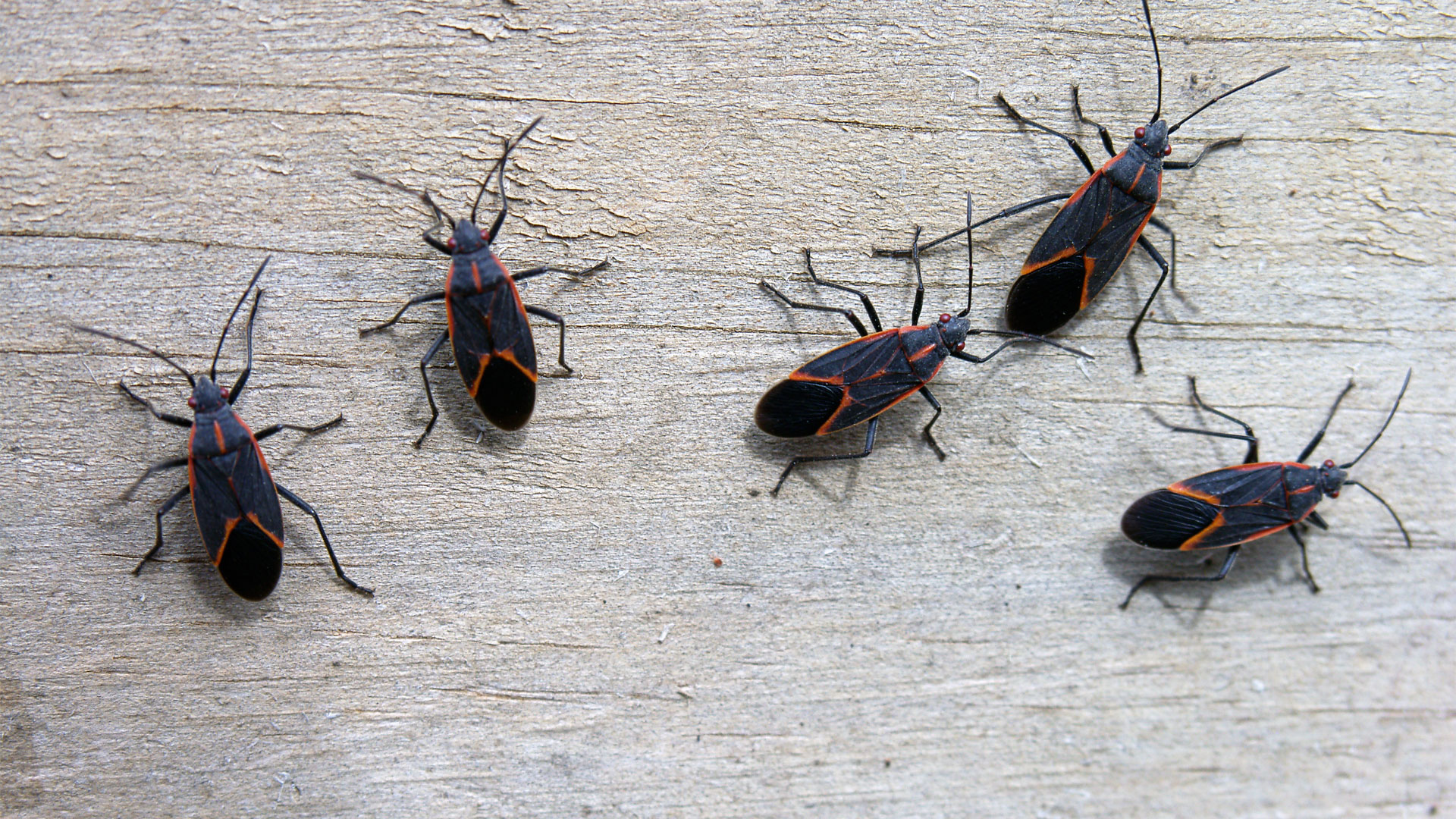How to get rid of boxelder bugs from your home
This are some tips shared by our experts to help remove these pests from your home


Boxelder bugs, also known as maple bugs, are commonly found in areas with a large density of boxelder, maple, or ash trees and will often gravitate towards homes with those species of tree in their backyard.
During the summer months, it is necessary to understand how to protect ourselves and our homes from bugs and insects and get rid of them when they invade. Wanting to get rid of crickets as well as getting rid of mosquitoes often becomes problematic during the warmer weather. The trick, experts say, is to implement some smart preventative measures, such as homemade bug sprays and plants that repel bugs to keep these pests at bay.
We’ve summarized the best methods for removing boxelder bugs provided by our experts.
How to get rid of boxelder bugs
Boxelder bugs are known as nuisance pests. Whilst they do not sting or typically transmit diseases, their feces can stain light colored surfaces. Either way, the best thing to do is to get rid of the boxelder bugs before they release havoc.
1. Sealing entry points
One of the best ways to reduce the amount of boxelder bugs is through preventative methods. Boxelder bugs often find their way inside your home through small cracks and gaps in walls, doors, and windows.
‘Applying a residual insecticide barrier around your home's foundation can prevent boxelder bugs from congregating near entry points,’ says Alex Tinsman from How To Houseplant. ‘Use a product labeled for outdoor use and follow the manufacturer's instructions for application. Reapply the barrier as needed, especially after rain or heavy watering.’
By sealing these entry points with caulk or weather stripping, you can prevent them from entering your living spaces in the first place.

Alex Tinsman was born in Wisconsin and raised in Iowa and he is the Founder and Editor of HowToHouseplant.com. He is a passionate indoor gardener and the site aims to provide expert know-how on choosing, growing, and caring for houseplants.
2. Water and soap solution
Boxelder bugs boast a remarkable adaptation through specialized water-repellent structures that aid their survival. Leverage this trait by concocting a solution of mild dish soap and water, then applying it using a sprayer.
‘To get rid of boxelder bugs outside of your home, simply make a mixture of water and dish soap in a spray bottle,’ says gardening expert Jeremy Yamaguchi. ‘Once you have created this solution you can then spray the bugs directly.’
This mixture interferes with the bug's water-repelling features, leading to their immobilization. Spraying this solution on outdoor surfaces acts as a potent deterrent against congregations.

As the CEO of Lawn Love, Jeremy Yamaguchi helps homeowners find quality, reliable lawn care. Specializing in technology and using industry experience, he intends to revolutionize the lawn care industry.
3. Remove boxelder trees
An intriguing aspect of boxelder bugs is their inclination for trees, particularly maple and boxelder varieties. These insects tend to congregate on tree trunks and branches, enticed by the seeds these trees bear.
Employing judicious tree management – trimming branches and foliage away from your dwelling – can significantly curtail the likelihood of these insects amassing on nearby walls or accessing indoor spaces.
4. Add diatomaceous earth
One way to get rid of boxelder bugs from outside your home is by adding diatomaceous earth. Diatomaceous earth, which is available at Amazon, is an organic powder formed from the fossilized remnants of microalgae and is efficient in treating boxelder bugs while remaining non-toxic to people and dogs.
According to Michel Johnson, a pest control expert, to apply diatomaceous earth, spread the powder around tree bases and sprinkle it along home perimeters, paying special attention to access places such as window sills and door jambs.
Within hours, the powder will dehydrate and kill the bugs. If rain washes away the powder or fresh swarms appear, repeat the application.

Michel Johnson is a highly skilled and knowledgeable Pest Control Expert specializing in bed bug eradication, with a strong passion for educating the public about effective pest management strategies through his blog www.CiaoBedBugs.com.
5. Call pest control
If your boxelder bug infestation is severe and the above methods don't provide satisfactory results, consider seeking help from a professional pest control service.
They have access to more potent and targeted treatments that can effectively manage the infestation while ensuring the safety of your home and the environment.
FAQs
What eats box elder bugs?
Rodents, including mice, rats, and chipmunks, are known to eat boxelder bugs. Spiders and predaceous insects may eat boxelder bugs, too. For farmers or homesteaders, chickens, ducks, and guinea hens may also be the answer.
Boxelder bugs are an unwanted pest and it is important to know how to remove them from your home. Replacing seed-bearing boxelder trees is another way of removing them. These insects feed on female boxelder tree seed pods, therefore, replacing these trees with non-seed-bearing male trees or other species will eradicate the pests permanently.
Sign up to the Homes & Gardens newsletter
Design expertise in your inbox – from inspiring decorating ideas and beautiful celebrity homes to practical gardening advice and shopping round-ups.

Seraphina is a contributing editor at Homes & Gardens, writing Solved features on organizing and storage. She loves to decorate and also grow her own produce from her home in London. Her previous experience includes working at Women's Health and Fabulous Magazine.
-
 Little Greene paint colors in real homes – 19 rooms decorated by designers with tried and true paint shades and wallpapers
Little Greene paint colors in real homes – 19 rooms decorated by designers with tried and true paint shades and wallpapersGain fresh paint color inspiration with these timeless Little Greene shades, from rich greens to elegant neutrals
By Emily Moorman
-
 If your home's facade is riddled with cobwebs, this $12 tool makes cleaning once-unreachable spots simple and speedy
If your home's facade is riddled with cobwebs, this $12 tool makes cleaning once-unreachable spots simple and speedySay goodbye to cobwebs and hello to a fresh and clean facade
By Rebecca Shepherd